-
 Bitcoin
Bitcoin $106,754.6083
1.33% -
 Ethereum
Ethereum $2,625.8249
3.80% -
 Tether USDt
Tether USDt $1.0001
-0.03% -
 XRP
XRP $2.1891
1.67% -
 BNB
BNB $654.5220
0.66% -
 Solana
Solana $156.9428
7.28% -
 USDC
USDC $0.9998
0.00% -
 Dogecoin
Dogecoin $0.1780
1.14% -
 TRON
TRON $0.2706
-0.16% -
 Cardano
Cardano $0.6470
2.77% -
 Hyperliquid
Hyperliquid $44.6467
10.24% -
 Sui
Sui $3.1128
3.86% -
 Bitcoin Cash
Bitcoin Cash $455.7646
3.00% -
 Chainlink
Chainlink $13.6858
4.08% -
 UNUS SED LEO
UNUS SED LEO $9.2682
0.21% -
 Avalanche
Avalanche $19.7433
3.79% -
 Stellar
Stellar $0.2616
1.64% -
 Toncoin
Toncoin $3.0222
2.19% -
 Shiba Inu
Shiba Inu $0.0...01220
1.49% -
 Hedera
Hedera $0.1580
2.75% -
 Litecoin
Litecoin $87.4964
2.29% -
 Polkadot
Polkadot $3.8958
3.05% -
 Ethena USDe
Ethena USDe $1.0000
-0.04% -
 Monero
Monero $317.2263
0.26% -
 Bitget Token
Bitget Token $4.5985
1.68% -
 Dai
Dai $0.9999
0.00% -
 Pepe
Pepe $0.0...01140
2.44% -
 Uniswap
Uniswap $7.6065
5.29% -
 Pi
Pi $0.6042
-2.00% -
 Aave
Aave $289.6343
6.02%
How to estimate the increase of the third wave of the wave theory?
Elliott Wave Theory helps crypto traders predict price movements by identifying impulse and corrective waves, with the third wave often being the strongest and most profitable.
Jun 14, 2025 at 09:56 pm
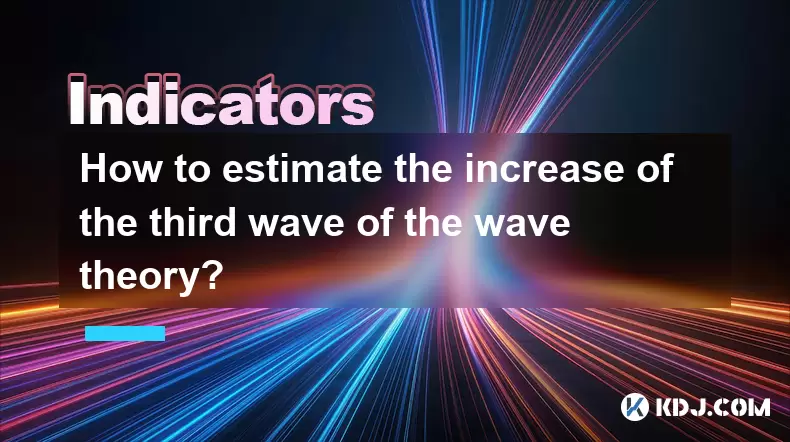
Understanding the Basics of Wave Theory in Cryptocurrency
Wave theory, also known as Elliott Wave Theory, is a popular analytical tool used by traders to predict price movements based on repetitive patterns. In the context of cryptocurrency markets, wave theory helps identify potential turning points and trend continuations. The foundation of this theory lies in the idea that market sentiment moves in predictable waves: five upward (impulse) waves followed by three corrective waves.
In this framework, the third wave typically represents the strongest and most extended movement within an uptrend. Estimating its increase is crucial for maximizing profits and managing risks in volatile crypto assets like Bitcoin or Ethereum.
Key Point: The third wave often extends beyond the first wave's peak and can be the longest in the sequence.
Identifying the Start of the Third Wave
Before estimating the increase, it’s essential to confirm that the market has entered the third wave phase. This begins after the completion of the second corrective wave. Traders use various technical indicators such as moving averages, RSI, and volume analysis to validate this transition.
- Look for increased trading volume during upward price action
- Observe RSI breaking above the 50 level, signaling renewed bullish momentum
- Confirm the pattern using Fibonacci retracement levels
Misidentifying the start of the third wave can lead to inaccurate estimations and poor trade execution.
Tip: Always cross-reference wave counts with other technical tools before entering a position.
Using Fibonacci Extensions to Estimate the Third Wave Length
One of the most reliable methods for estimating the potential reach of the third wave is applying Fibonacci extensions. These ratios are derived from the Fibonacci sequence and are widely accepted among technical analysts.
To apply this method:
- Measure the length of the first wave
- Apply Fibonacci extension levels (commonly 161.8%, 200%, and 261.8%) from the end of the second wave
These projections give traders a target zone where the third wave might conclude or pause. In crypto markets, due to their high volatility, the third wave often exceeds the 161.8% extension and reaches 200% or more.
Important: Use these levels as guides rather than exact targets, especially in fast-moving crypto environments.
Analyzing Volume and Momentum Indicators
Volume and momentum play a significant role in confirming the strength of the third wave. A strong third wave should exhibit increasing volume and positive momentum divergence.
- Watch for rising volume bars during price advances
- Use MACD to detect momentum shifts — a rising histogram indicates strengthening impulse
- Check for RSI divergence — if price makes new highs but RSI doesn’t, the third wave may be nearing exhaustion
Failure to see these signs could suggest a weak third wave or a false count.
Critical Insight: High volume and momentum are essential signals that the third wave is genuine and likely to extend further.
Combining Wave Counts with Support and Resistance Levels
Support and resistance levels act as psychological barriers in the market. When combined with wave analysis, they provide a clearer picture of where the third wave might stall or accelerate.
- Identify key horizontal support/resistance zones from previous price action
- Overlay them with your Fibonacci extension targets
- Monitor how price reacts near these confluence areas
In crypto trading, these zones often coincide with round number levels (e.g., $30,000 for BTC), making them even more significant.
Strategy Tip: Look for confluence between Fibonacci levels, wave structure, and historical support/resistance to improve accuracy.
Frequently Asked Questions
Q: Can the third wave ever be shorter than the first wave?
While rare, yes — especially in complex corrections or when market conditions change abruptly. However, in classic Elliott Wave counts, the third wave tends to be the longest and strongest.
Q: How do I differentiate between a third wave and a fifth wave in real-time?
The third wave usually shows stronger momentum and higher volume compared to the fifth. Additionally, the fifth wave often exhibits signs of exhaustion like decreasing volume and bearish divergences.
Q: Is Elliott Wave Theory applicable across all timeframes in crypto trading?
Yes, it can be applied to any timeframe, but consistency improves when analyzing higher timeframes (like 4H or daily charts) for better clarity and fewer false signals.
Q: What should I do if my wave count becomes invalid?
Reassess your chart using alternative Fibonacci measurements or adjust your wave labeling. Never force a count if the price action contradicts your initial assumptions.
Disclaimer:info@kdj.com
The information provided is not trading advice. kdj.com does not assume any responsibility for any investments made based on the information provided in this article. Cryptocurrencies are highly volatile and it is highly recommended that you invest with caution after thorough research!
If you believe that the content used on this website infringes your copyright, please contact us immediately (info@kdj.com) and we will delete it promptly.
- 2025-W Uncirculated American Gold Eagle and Dr. Vera Rubin Quarter Mark New Products
- 2025-06-13 06:25:13
- Ruvi AI (RVU) Leverages Blockchain and Artificial Intelligence to Disrupt Marketing, Entertainment, and Finance
- 2025-06-13 07:05:12
- H100 Group AB Raises 101 Million SEK (Approximately $10.6 Million) to Bolster Bitcoin Reserves
- 2025-06-13 06:25:13
- Galaxy Digital CEO Mike Novogratz Says Bitcoin Will Replace Gold and Go to $1,000,000
- 2025-06-13 06:45:13
- Trust Wallet Token (TWT) Price Drops 5.7% as RWA Integration Plans Ignite Excitement
- 2025-06-13 06:45:13
- Ethereum (ETH) Is in the Second Phase of a Three-Stage Market Cycle
- 2025-06-13 07:25:13
Related knowledge
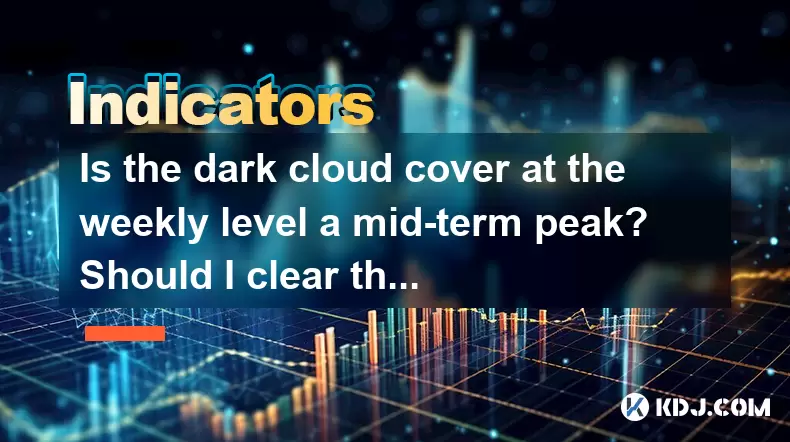
Is the dark cloud cover at the weekly level a mid-term peak? Should I clear the position?
Jun 17,2025 at 02:21pm
Understanding the Dark Cloud Cover PatternThe Dark Cloud Cover is a well-known candlestick pattern used by technical analysts to identify potential trend reversals from bullish to bearish. It typically forms at the end of an uptrend and consists of two candles: the first is a strong bullish (green) candle, followed by a bearish (red) candle that opens h...
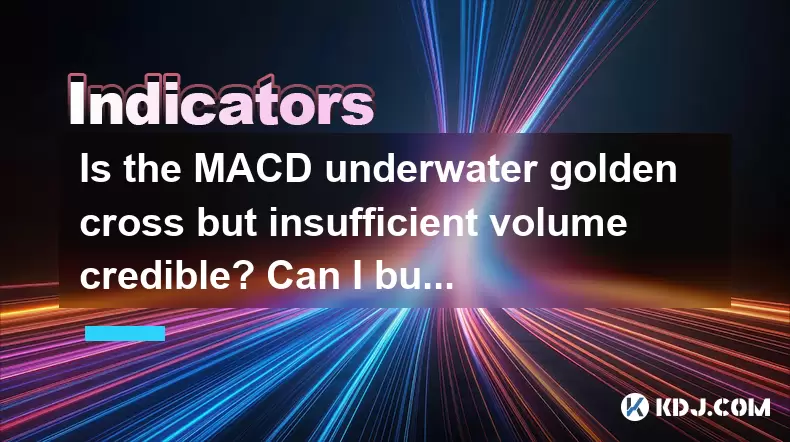
Is the MACD underwater golden cross but insufficient volume credible? Can I buy at the bottom?
Jun 17,2025 at 03:08pm
Understanding the MACD Underwater Golden CrossThe MACD underwater golden cross occurs when the MACD line crosses above the signal line below the zero line, signaling a potential reversal from a downtrend to an uptrend. This phenomenon is often interpreted by traders as a bullish signal, especially in cryptocurrency markets where momentum plays a signifi...
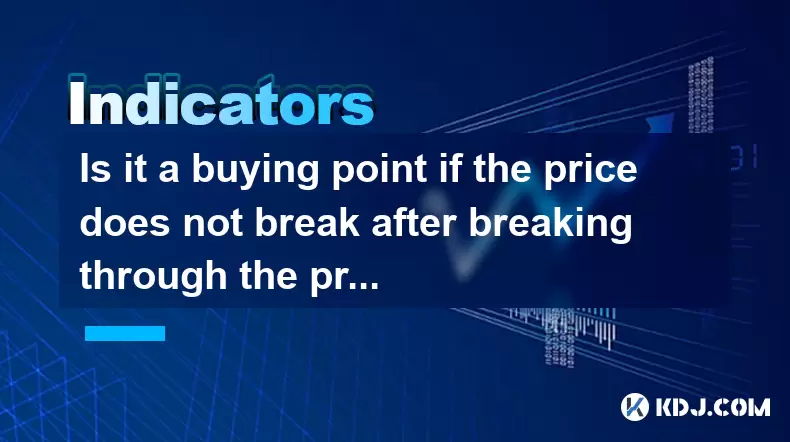
Is it a buying point if the price does not break after breaking through the previous high? How to confirm?
Jun 17,2025 at 01:22pm
Understanding Price Behavior After Breaking Previous HighsWhen analyzing cryptocurrency price charts, traders often look for breakouts as potential signals for new trends. A common question among traders is whether a non-breakdown after breaking through a previous high indicates a buying opportunity. To answer this, it's essential to understand the psyc...
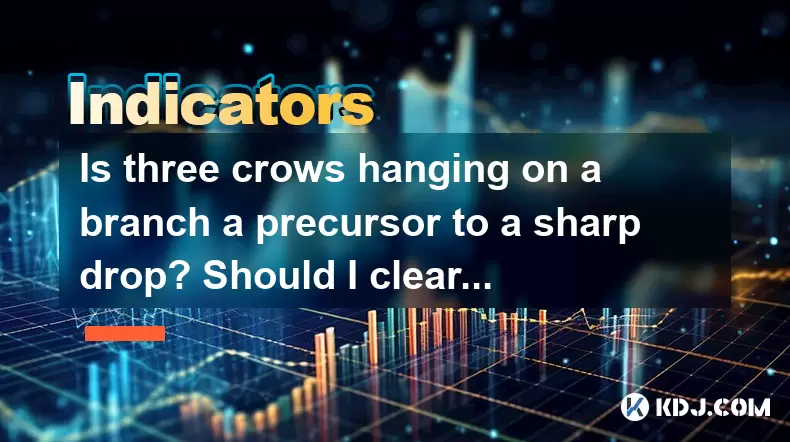
Is three crows hanging on a branch a precursor to a sharp drop? Should I clear my position?
Jun 17,2025 at 12:50pm
What Does 'Three Crows Hanging on a Branch' Mean in Crypto Trading?In technical analysis, the 'three crows hanging on a branch' is a candlestick pattern that often signals a potential reversal from an uptrend to a downtrend. This pattern typically appears after a period of rising prices and consists of three consecutive bearish (red) candles with progre...
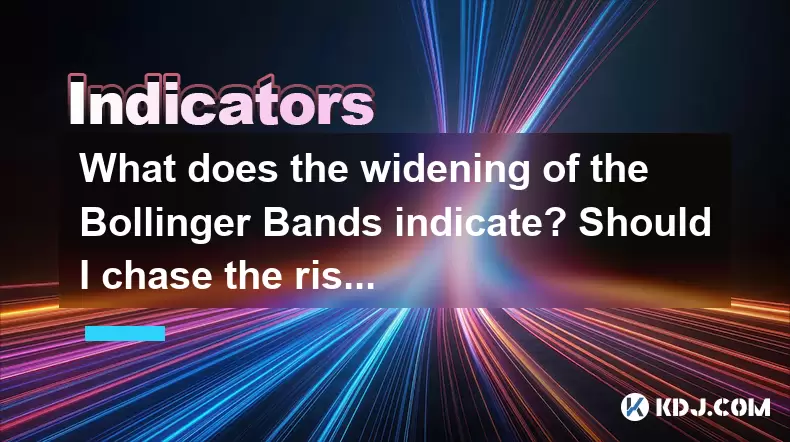
What does the widening of the Bollinger Bands indicate? Should I chase the rise or leave the market?
Jun 17,2025 at 02:28pm
Understanding Bollinger Bands and Their SignificanceBollinger Bands are a widely used technical analysis tool in cryptocurrency trading. They consist of a moving average (typically a 20-day simple moving average) with two standard deviation lines plotted above and below it. These bands dynamically adjust to price volatility, expanding when volatility in...
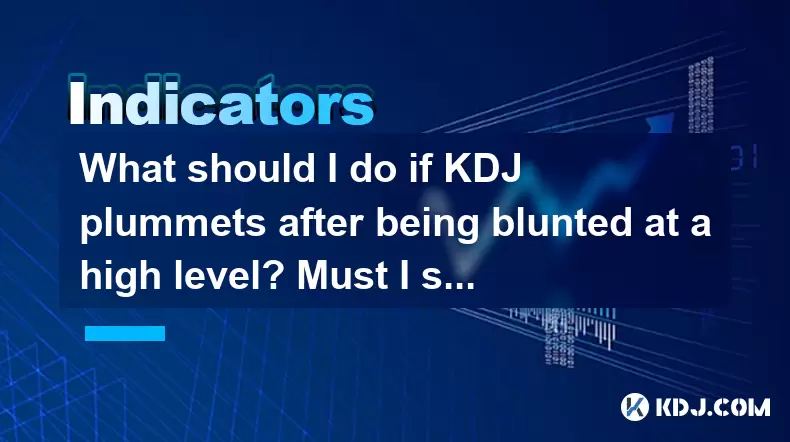
What should I do if KDJ plummets after being blunted at a high level? Must I stop loss?
Jun 17,2025 at 12:01pm
Understanding KDJ Indicator Dynamics in Cryptocurrency TradingThe KDJ indicator, also known as the stochastic oscillator, is a momentum-based tool used to identify overbought and oversold conditions in financial markets, including cryptocurrency. It consists of three lines: the %K line (fast stochastic), the %D line (slow stochastic), and the %J line (d...

Is the dark cloud cover at the weekly level a mid-term peak? Should I clear the position?
Jun 17,2025 at 02:21pm
Understanding the Dark Cloud Cover PatternThe Dark Cloud Cover is a well-known candlestick pattern used by technical analysts to identify potential trend reversals from bullish to bearish. It typically forms at the end of an uptrend and consists of two candles: the first is a strong bullish (green) candle, followed by a bearish (red) candle that opens h...

Is the MACD underwater golden cross but insufficient volume credible? Can I buy at the bottom?
Jun 17,2025 at 03:08pm
Understanding the MACD Underwater Golden CrossThe MACD underwater golden cross occurs when the MACD line crosses above the signal line below the zero line, signaling a potential reversal from a downtrend to an uptrend. This phenomenon is often interpreted by traders as a bullish signal, especially in cryptocurrency markets where momentum plays a signifi...

Is it a buying point if the price does not break after breaking through the previous high? How to confirm?
Jun 17,2025 at 01:22pm
Understanding Price Behavior After Breaking Previous HighsWhen analyzing cryptocurrency price charts, traders often look for breakouts as potential signals for new trends. A common question among traders is whether a non-breakdown after breaking through a previous high indicates a buying opportunity. To answer this, it's essential to understand the psyc...

Is three crows hanging on a branch a precursor to a sharp drop? Should I clear my position?
Jun 17,2025 at 12:50pm
What Does 'Three Crows Hanging on a Branch' Mean in Crypto Trading?In technical analysis, the 'three crows hanging on a branch' is a candlestick pattern that often signals a potential reversal from an uptrend to a downtrend. This pattern typically appears after a period of rising prices and consists of three consecutive bearish (red) candles with progre...

What does the widening of the Bollinger Bands indicate? Should I chase the rise or leave the market?
Jun 17,2025 at 02:28pm
Understanding Bollinger Bands and Their SignificanceBollinger Bands are a widely used technical analysis tool in cryptocurrency trading. They consist of a moving average (typically a 20-day simple moving average) with two standard deviation lines plotted above and below it. These bands dynamically adjust to price volatility, expanding when volatility in...

What should I do if KDJ plummets after being blunted at a high level? Must I stop loss?
Jun 17,2025 at 12:01pm
Understanding KDJ Indicator Dynamics in Cryptocurrency TradingThe KDJ indicator, also known as the stochastic oscillator, is a momentum-based tool used to identify overbought and oversold conditions in financial markets, including cryptocurrency. It consists of three lines: the %K line (fast stochastic), the %D line (slow stochastic), and the %J line (d...
See all articles

























































































